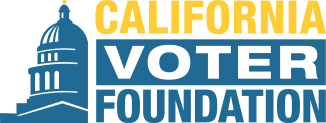Excerpts:
Californians faced the naysayers and voted by mail in record numbers this election, potentially avoiding a pandemic super spreader event and showing the nation it could be done.
CalMatters interviewed voting officials in most of the state’s 58 counties and their verdict is in: The experiment with voting by mail saw few glitches, little drama and, instead, might well provide a blueprint for future elections across the country.
Indeed, state officials are already talking about plans to make voting by mail permanent for the biggest state in the union and its 22 million registered voters.
Besides the unprecedented challenge of conducting the election in a pandemic, voting officials also had to deal with a deep, partisan divide that helped to fuel widespread misinformation about election security.
Yet by the time polls closed at 8 p.m. Nov. 3, voter registrars say they had little need for law enforcement help and reported insignificant incidents affecting ballot safety. They reported historic numbers of ballots cast, about 17.6 million at last count, and almost 208,000 more still to process as of 5 p.m. Monday.
- - - - - - - -
The success of early voting — more than half of the mail ballots were returned by election day — prompted Gov. Gavin Newsom to say he’d support making it permanent.
“We’ll discuss that with the Legislature, but I think making voting easier, providing more choice and more opportunity is fabulous,” he said on election day.
Speaker of the Assembly Anthony Rendon and Secretary of State Alex Padilla, both Democrats, also said they liked the idea.
If Berman’s proposal gains traction, the Legislature should come up with the money to help counties pay for mail balloting and vote centers, said Kim Alexander, president of the California Voter Foundation advocacy group.
“The idea has merit but you have to talk about funding,” she said. “I didn’t see that in the announcement.”
Federal CARES Act money, provided to help cover the costs of the pandemic, helped pay the costs of mailing ballots to every voter. “That’s not going to be there next time,” she said.
- - - - - - - -
The rejection rate of mail-in ballots for the election won’t be known until results are final, but California Voter Foundation research shows a 1.7% rejection rate over a 10-year period.
That’s too high, said Alexander of the voter foundation.
“Young voters were three times more likely to get their ballot rejected,” Alexander said. “I do worry that the system that uses signatures and mail will be foreign to young voters.”
Another problem is that too many ballots are disqualified because they were postmarked after election day, the study found.
That’s true this year too, it appears. In Sacramento County, 783 ballot envelopes arrived two days after the election and 455 were postmarked Nov. 4, one day too late to be counted, the foundation said.
In Sacramento County’s past three elections, most ballots rejected for lateness were due to being postmarked too late, not for arriving too late to count, the foundation said. In the state’s March primary, about 70,000 of 102,000 rejected mail ballots were rejected for lateness.
To attack the problem, voters should be allowed to bring their mail ballot to a vote center and put them into the scanner, Alexander said. Shasta County allowed that option in the election and “it worked incredibly well,” she said.
“The voter can watch the counter turn over and know it was accepted,” she said.
Voters who fail to sign the ballot envelope or whose signature did not match are mailed a notice to come in and “cure” the problem so their ballot gets counted.
Few ballots are still arriving by mail, according to elections officials. The last day to receive a mail ballot was Friday. (Full Story)

